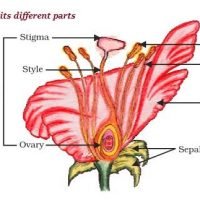Breathing And Exchange Of Gases MCQ Important Questions For NEET are totally based on NCERT and previous year questions. With Answer Keys.
Breathing And Exchange Of Gases is associated with Biology Class 11 and Chapter 17 NCERT for NEET and CBSE.
Answer Keys of these Breathing And Exchange Of Gases MCQ Important Questions For NEET are also given at the bottom of this page.

Hope that you will get full benefits from these Breathing And Exchange Of Gases MCQ Important Questions For NEET.
ALL THE BEST
Breathing And Exchange Of Gases MCQ Important Questions For NEET
1) Which is correct about nasopharynx?
a) Internal nostrils open into nasopharynx b) It is the common passage for both air and food
c) It opens through gullet of the larynx region into the trachea
d) All
2) Trachea divides into right and left primary bronchi at __ the thoracic vertebra?
a) 4 b) 5
c) 6 d) 9
3) Incomplete cartilaginous rings support all of the following except?
a) Trachea
b) Primary, secondary and tertiarty bronchioles
c) Respiration bronchioles
d) Initial bronchioles
4) Lungs are comprised by?
a) Only alveoli
b) Pleura
c) Different types of bronchi
d) Network of bronchi, bronchioles and alveoli
5) Sites of gaseous exchange in lungs are?
a) Alveoli b) Tracheoles
c) Bronchioles d) Pleura
6) The part starting with the external nostrils upto the terminal bronchioles constitute the?
a) Respiration or exchange part of respiratory system
b) Inspiratory part
c) Conducting part
d) Expiratory part
7) Respiratory or exchange part of the respiratory system consists of?
a) The parts starting with external nostrils upto terminal bronchioles
b) Alveoli and their ducts
c) All bronchi and terminal bronchioles
d) All bronchioles
8) The conducting part of the respiratory system has functions?
a) Filter, warm and moisten the air
b) Gaseous exchange
c) Filtering the air only
d) Warm the air
9) The chamber formed dorsally by the vertebral column, ventrally by sternum, laterally ribs and on the lower side by dome-shaped diaphragm is?
a) Abdominal cavity
b) Thoracic cavity
c) Pelvic cavity
d) Cranial cavity
10) The lungs expend in inspiration / inhalation because?
a) Diaphragm contracts upward
b) The volume of thoracic cavity increases
c) External intercostal muscles relax
d) Diaphragm relaxes
11) The process of exhalation / expiration is begun mainly due to?
a) The contraction of external intercostal muscles
b) The contraction of the diaphragm
c) The relaxation of external intercostal muscles
d) Low pressure in thoracic cavity
12) Which of the following statements about the mechanism of ventilation / breathing is false?
a) As the diaphragm relaxes, air is expelled from the respiratory system
b) During inspiration the lungs act as suction pump
c) Inspiration is a passive and expiration is an active process
d) For quiet breathing external intercostal muscles and diaphragm play an important role
13) Inspiration occurs when there is a negative pressure in the lungs with respect to atmospheric pressure. This negative pressure is achieved when?
a) Intrapulmonary pressure is less than the
atmospheric pressure
b) Intra pulmonary pressure is greater than the atomospheric pressure
c) Intrapulmonary pressure is equal to the
atmospheric pressure
d) Intrapleural pressure becomes more than the intraalveolar pressure
14) Expiration takes place when the intrapulmonary pressure is?
a) Greater than the atmospheric pressure b) Lesser than the atmospheric pressure
c) Equal to atmospheric pressure
d) Equal to intrapleural pressure
15) On an average, a healthy human breathes _________times / minute?
a) 20 – 40 b) 1 – 6
c) 12 – 16 d) 16 – 25
16) Additional muscles for forceful breathing are?
a) Diaphragm and external intercostal muscles
b) Abdominal muscles and sternocleidomastoid
c) Diaphragm & Scapular muscles
d) External and internal intercostal muscles
17) The partial pressure of oxygen in the alvelolar air is?
a) 45 mm Hg b) 95 mm Hg
c) 104 mm Hg d) 110 mm Hg
18) The volume of ‘anatomical dead space’ air is normally?
a) 230 ml b) 210 ml
c) 190 ml d) 150 ml
19) The volume and surface area of deer is 1,50,000 cm3 and 19,000 cm2 and of a squirrel is 625 cm3 and 530 cm2. The area available for heat loss per cm3 volume of the squirrel will be approximately?
a) Seven times less than the deer
b) Five times less than the deer
c) Three times more than the deer
d) Eleven times more than the deer
20) The urge to inhale in humans results from?
a) Rising PCO2 b) Rising PO2
c) Falling PCO2 d) Falling PO2
21) The amount of O2 transported in a dissolved state through plasma is approximately?
a) 97% b) 20-25%
c) 7% d) 3%

Breathing And Exchange Of Gases MCQ – Answer Keys
1).A
2) B. The trachea begins level with the sixth cervical vertebra and the its division seen at the level of the fifth thoracic vertebra (T5).
3) C. Respiration bronchioles lacks cartilaginous rings
4) D. Network of bronchi, bronchioles and alveoli
5) A. Alveoli
6) C. Conducting part
7) B. Alveoli and their ducts
8) A. Filter, warm and moisten the air
9) B. Thoracic cavity
10) B. The volume of thoracic cavity increases
11) C. The relaxation of external intercostal muscles
12) C. Inspiration is a passive and expiration is an active process is wrong statement
13) A. Intrapulmonary pressure is less than the atmospheric pressure
14) A. Greater than the atmospheric pressure
15) C. 12 – 16 times / minute
16) B. Abdominal muscles and sternocleidomastoid
17) C. 104 mm Hg
18) D. 150 ml
19) A. Seven times less than the deer (6.47)
20) A. Rising PCO2 is a chemical signal.
21) D. 3%






 155 out of 200 questions were directly asked from these notes in NEET 2024
155 out of 200 questions were directly asked from these notes in NEET 2024
